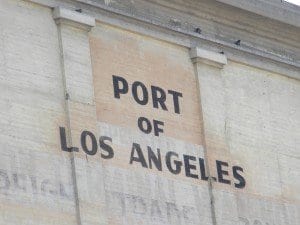The Port of Los Angeles was originally documented on October 8, 1542 by Portuguese explorer Juan Rodriquez Cabrillo as the San Pedro Bahia de Los Fumas, or the “Bay of Smokes,” after the smoke that rose from the nearby Native American hunters. In 1897, Congress declared the San Pedro Bay the official Port of Los Angeles thanks to the persuasions of a California Senator, Stephen M. White, also known as the “Savior of the Bay.” The Port became an official department of the City of LA when the cities of San Pedro and Wilmington were annexed to the City of LA in 1909. Today, the Port of Los Angeles is one of the United States’ busiest seaports.Facilities:– Acreage: 7,500 acres (4,300 land/3,200 water)- Berths: 270 – including nine Alternative Maritime Power™ (AMP™) berths- Marinas: 17 (3,500 recreational boat slips)
- Automobile (1)
- Liquid Bulk (7)
- Breakbulk (2)
- Passenger (2)
- Container (9)
- Dry Bulk (2)
Throughput 2011:– Container Volume: 7.9 million TEUs (CY 2011)
- Furniture – 392,278
- Automobile Parts – 376,117
- Apparel – 338,572
- Electronic Products – 237,807
- Footwear – 158,854
Geography:The Port of Los Angeles is located in Southern California between the Pacific Ocean and the San Gabriel Mountains on the San Andreas Fault, about nine kilometers west-southwest of the Port of San Diego and almost 390 nautical miles south-southeast of the Port of San Francisco.
“





